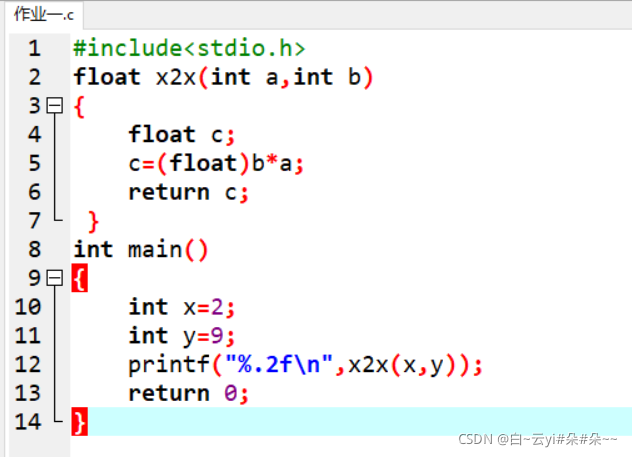?
目录
(一)在ubantu系统输出"hello,world"
用文本编译器编译hello.c
#include<stdio.h>
int main()
{
printf("hello,world\n");
}
在终端执行的结果

(二)用gcc编译C程序
1、编写C程序
sub1.c
#include<stdio.h>
float x2x(int a,int b)
{
float c;
c=(float)b*a;
return c;
}main1.c
#include<stdio.h>
#include"sub1.h"
int main()
{
int a=2;
int b=9;
float c=x2x(a,b);
printf("%f\n",c);
}sub1.h
?
#include<stdio.h>
float x2x(int a,int b);
?2、gcc直接编译运行

(三)用windows系统编译C程序
Devc++编写运行代码

?
(四)用Makefile编译C程序
1、编写Makefile文件
main1:sub1.o main1.c
gcc main.c sub1.o -o main1
sub1.o:sub1.c
gcc -c sub1.c -o sub1.o
clean:
rm *.o??
2、用Makefile编译C程序
?
(五)心得体会
?
? ? ? 通过这次作业 ,我对ubantu系统有了一个初步的了解,并且学会了?用cgg 和makefile? 的指令编写代码,从中也深刻认识到C语言是如何从源程序到可执行文件的过程。
?注:如有不妥,请见谅